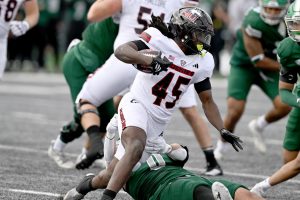Task force eyes new curriculum
February 6, 1990
The Board of Regents’ Task Force on Teacher Education begins its search for new curriculum this month to better prepare education majors to teach “the children of the ‘90s,” according to one Regent.
The task force will study what is being taught at regency colleges of education compared to other leading colleges, Regent and Task Force Chairman Clara Fitzpatrick said. The research will be used to reshape the curriculum for regency education majors, she said.
The board governs NIU, Sangamon State University at Springfield and Illinois State University at Normal.
The task force includes Charles Stegman, NIU dean of the College of Education, and Don Reyes, NIU professor of curriculum and instruction. Faculty and deans from SSU and ISU were also appointed.
Fitzpatrick works for the College Board, which makes the Scholastic Aptitude Test, and recently took a sabbatical to substitute teach in Chicago. She was appointed to the BOR by the governor in 1979.
Fitzpatrick said, “The National Assessment of Education Progress recently showed that seventh grade students can’t find the United States on a map. They’ve got to know these things in order to make choices in a democratic society.”
Improving education “is on everyone’s mouth. It’s talked about from the president down. And yet, we who train teachers haven’t taken a big step,” Fitzpatrick said.
“These three universities have a lot going for them—lab school (teaching facility) at ISU, research on urban school systems at NIU—that make the regency system perfect for this sort of study,” she said.
David Williams, regency vice chancellor for academic affairs, said, “As a tax-supported institution, we owe it to the communities we serve to help them upgrade their education systems.”
Many regency students are from Chicago and East St. Louis, Fitzpatrick said. The task force originally started in 1985 by former Chancellor William Monat, an NIU political science professor.
The task force’s purpose was to evaluate the existing teacher programs and track the progress of educational reform bills in the legislature, according to the BOR’s 1987 summary.
“At the present rate, in the year 2,000, 33 percent of students and only 5 percent of all teachers will be minorities,” Stegman said. “In order to provide role models and mentors for students, more minority teachers are needed.
“We’ve got to get and keep more minorities in teacher education programs,” Stegman said.
Williams said, “There will be an added emphasis placed on minority recruitment and outreach to schools predominatly attended by minority students.”
Admasu Zike, director of the NIU Center for Black Studies, said he feels college preparation should be more important for educational change. “There are high schools where the number courses needed to gain college admission are not even available,” he said.
Fitzpatrick said, “We’re talking about improving the way teachers are prepared to go out there and teach a whole new generation of students. Both minority and majority are no longer from ‘Brady Bunch’ families, yet we’ve been training our teachers in the same ways.”






